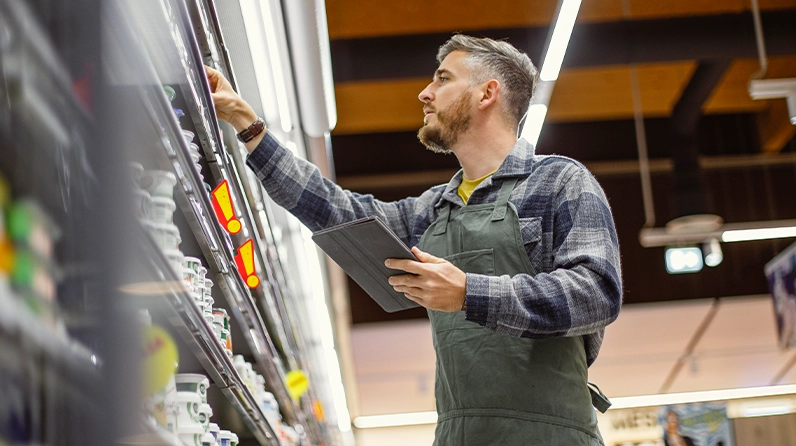
Over the past year, the once-obscure term of NFTs, or non-fungible tokens, has garnered mainstream attention, as some digital works have attracted millions of dollars at auction, and new NFTs have burgeoned, motivated by creativity and profit. Still, understanding of this trend remains murky given its fluidity and unique combination of art, commerce and digitalization.
During the fall, Neuberger Berman and Sotheby’s hosted an in-person event providing insight into this developing realm. Gregory Khost, our Head of Business Development for Private Wealth Management, interviewed Nina del Rio, Vice Chairman, Head of Sotheby's Advisory: Museums, Corporations, Individuals, and Matthew Iles, Co-Founder and Partner at Serotonin, a technology marketing firm, and General Manager of Sotheby’s Metaverse, to explore NFTs, their potential for artists and collectors, and how they are already helping transform the art world. The following Q&A was adapted from their discussion.
| Greg: | NFTs have been called the Wild West of the art industry and, in Matthew’s words, “a renaissance for the creator economy.” Before we get into the potential implications of NFTs, can you first explain what they are and how they work? |
| Matthew: | Although often considered an artwork, at a basic level, an NFT is any digital object that can be readily identified as unique. If you think about currency, it is typically fungible, which means one dollar can readily be substituted for another—they are essentially identical. The same principle applies to cryptocurrencies like Bitcoin, except that they are listed in a shared digital ledger called blockchain. NFTs are on that ledger but their coding is considered to be one-of-a-kind. As with a cryptocurrency, owners hold their NFTs in a digital wallet, which may be housed on a server, computer or even a thumb drive. |
NFTs: Key Terminology
Blockchain: A list of digital records, called blocks, that are linked using cryptography. A blockchain is resistant to modification of its data.
Cryptocurrency: A digital asset designed to work as a medium of exchange (currency). Individual coin ownership records are stored electronically using cryptography.
Ethereum. The blockchain platform with “smart contract” functionality where most NFTs are created. Its unit of exchange is the “ether” cryptocurrency.
Minting: The creation of an NFT on blockchain.
Nonfungible Token: An NFT is a digital object (often an artwork) that can readily be identified as unique, as opposed to currency units, which are identical to one another.
| Greg: | What accounts for the surge of interest in NFTs? |
| Matthew: | Over the past 25 years, we’ve been increasingly living online, and the pandemic reinforced that experience for many consumers. There’s obviously a lot wrong with the internet, but increasingly people are spending their time there, looking at things that are beautiful. Meanwhile, many artists have been creating works that are digital in nature—motion graphics, digital art—but historically haven't had a means to turn that digital art into an asset, and often their creative work has been duplicated endlessly. Although NFTs have been around for about six years, this value of establishing ownership—and the terms of ownership—is being recognized. So, the dual trends of online experience and value have converged. |
NFT Art Market, 2021 Total Annual Sales ($ Billions)

Source: Nonfungible. Cumulative through November 2021. For illustrative purposes only. Nothing herein constitutes a prediction or projection of future events or future market behavior. Investing entails risks, including possible loss of principal. Past performance is no guarantee of future results.
| Greg: | What could all this mean for artists? |
| Nina: | From the perspective of artists, I believe this provides the potential for a renaissance. NFTs can include what are called smart contracts, which potentially could allow artists to participate in their creativity in perpetuity. That is a very large and potentially meaningful shift in the art market. Currently, artists sell their physical work either directly or through a gallery, and then it’s out there in the secondary market. They often don't participate in the resale of that work. In the NFT world, that potential exists. For example, they may place conditions on ownership that are built into the NFT itself, including a share in the proceeds of resale, or terms where buyers may (or may not) repurpose NFT images. All this also has implications for philanthropy, as we will get to in a minute. |
| Greg: | The trend of NFTs is by nature quite decentralized. How do you square that with the historical role of auction houses and galleries as curators and intermediaries? |
| Nina: | We believe that institutions like Sotheby’s have an important role to play, and we deliberately curate in this space. That said, NFTs are democratizing, which is a direction that we feel should be embraced. It’s reflected in our development with Serotonin of Sotheby’s Metaverse, an online destination for collectors of digital art, where we offer an array of NFTs for auction. Our first sales event, “Natively Digital 1.2,” put the spotlight on those who have championed digital artists and contributed to the digital art space—many before it was popular to do so. |
| Greg: | What brought you to that point? It is a major transition. |
| Nina: | NFTs have been on our radar for some time, but the pandemic served as a real accelerant. When much of the art world shut down, we tried a number of innovative things. We reduced our reliance on physical catalogs and emphasized more digital communications. We also branched out, inviting bidders to participate with us in areas like sneakers, wines and prints—segments that are perhaps more welcoming and easier to access, and which brought in a wider array of participants. We also started thinking about how we could serve a greater role in the digital arena, which continues to expand even as the world emerges from the pandemic. A particular catalyst came from interaction with museum directors, who were clearly interested in knowing more about NFTs and how they could help support philanthropic goals. My discussions with Matthew evolved from there, and led to the curated experience in our Metaverse. |
| Greg: | Please talk a little more about the charitable aspect of this. How can it work? |
| Matthew: | This goes to the idea of membership, and a framework that Nina and I have been developing is an “NFT patrons” program, which derives from currently popular NFT groups such as CryptoPunks and Bored Ape Yacht Club. If you haven’t heard of them, they are essentially clubs where folks own a unique NFT, but are also members of a broader community trying to grow its cultural impact. |
| This is quite a powerful trend in pop culture, but when you consider applying it to philanthropy, it takes on different goals. Specifically, is there a way to leverage assets from within a museum collection that people might want to “own” as an NFT? This NFT would provide the same benefits as being a benefactor, patron or VIP member of a museum, including access to physical and virtual events, special dinners, inclusion in donor lists and the like. For example, donated funds could go to a specific project, where the donor could receive access to a membership group with similarly minded NFT owners. | |
| It’s an interesting combination of art and utility. The visual/artistic aspect is what you buy and get to put on a screen, but it comes with a utility to access other benefits—something that we’re finding has a lot of resonance when it comes to museum partners. | |
| Greg: | Let’s go back to digital creators and artists, who historically have been compensated on platforms based on popularity, as reflected in visits and “likes.” How can NFTs affect that dynamic? |
| Matthew: | Over the past decade, a handful of platforms have come to dominate the internet. They typically make money by engaging us frequently with content that we like, share or click on, and by then showing us relevant advertisements, with creators receiving a small portion of that ad revenue. Often, creators will have to post content very frequently to maintain their position in platform algorithms, contributing to a “rat race” environment. With a scenario built around NFTs, there may be a way for creators to remove the middleman, and to focus more on creation and less on commerce. |
| Because an NFT is a token, it’s easy to prove ownership, which opens the door for sellers to grant buyers access to special privileges such as the right to view exclusive content or attend special events. So, you can create a subscription/membership model built into the ownership of the artwork itself. All of which is to say that NFTs provide a new way of being able to engage with fans and collectors, and monetize them on any platform. | |
| Nina: | Looking at this through the filter of the art world and the perspective of artists, imagine the flexibility of just being able to market their work on their own and sell to whomever they want to sell to on platforms that are much more accessible than a gallery exhibition. This is not a judgment one way or the other, but it provides artists and creators amazing flexibility and freedom. |
| Greg: | Despite all the positives, there has been concern about the environmental impact of cryptocurrency and, by extension NFTs. What do you see as the issue? |
| Matthew: | NFTs are part of the blockchain, which require massive computer networks to keep track of them. So, what’s concerning is the energy consumption of all these computers. A fundamental premise of Bitcoin is that it can’t ever be changed, so the ability to curtail energy usage tied to that particular cryptocurrency seems limited. However, Ethereum, where most NFTs are created, has a potential path toward more energy efficiency, while other less-developed competitors are also trying to use advanced methods to limit energy consumption. So, it’s true that the original blockchain technologies consume a lot of energy relative to their perceived value, but newer iterations, which will make up the bulk of new issuance, are likely to reduce much of that concern. Many of those involved—from developers, to entrepreneurs, to consumers—know that this issue could hold back the industry, so they are working hard to address it. |
| Greg: | Finally, I’m hoping you can provide your perspective on where NFTs could fit into the broader art world moving forward. |
| Nina: | Something we understand from our involvement is that a lot of the participants who are buying NFTs now are also invested in cryptocurrency. Perhaps their homes are filled with digital artwork, or paintings as well. Although we haven’t seen it so far, we do anticipate a moment when these two worlds—the traditional collector and the NFT buyer—converge. |
| Matthew: | How collectors can enjoy or use their NFTs moving forward is a question that could affect its relationship with traditional art. To the naked eye, an NFT may be identical to digital copies that proliferate on the internet, and yet it is unique. To some degree, broader acceptance may be a function of hardware. Even before NFTs took off, Samsung introduced a television that didn’t look like a TV and could display digital art when you weren’t watching programs. Most televisions are in prominent locations, but are blank for most of the day. So, the potential is there to not only display NFTs, but conceivably to put in place verification so that only NFTs can appear on a given device. You might program a monitor to show NFTs on a rotating basis, or perhaps port your collection to another device when you are visiting friends, to share the works on their displays. Things will progress organically, but it could take a while. In the meantime, the world appears to understand the broad concept of owning NFTs, but is grappling with specific parameters as well as how digital art and NFTs will play out in relation to traditional media and also as part of our daily lives. |
| Greg: | This has been fascinating. Thank you both for your insights. |
Related Insights


INSIGHTS
U.S. Tariffs Hit Markets as Growth Questions Emerge

INSIGHTS
CIO Notebook: Hotter Inflation Creates Doubt for Investors

INSIGHTS
CIO Notebook: January Payrolls Light but U.S. Labor Market Still Strong
This material is provided for informational purposes only and nothing herein constitutes investment, legal, accounting or tax advice, or a recommendation to buy, sell or hold a security. This material is general in nature and is not directed to any category of investors and should not be regarded as individualized, a recommendation, investment advice or a suggestion to engage in or refrain from any investment-related course of action. Investment decisions and the appropriateness of this material should be made based on an investor’s individual objectives and circumstances and in consultation with his or her advisors. This material is not intended as a formal research report and should not be relied upon as a basis for making an investment decision. The firm, its employees and advisory clients may hold positions within sectors discussed, including any companies specifically identified. Specific securities identified and described do not represent all of the securities purchased, sold or recommended for advisory clients. It should not be assumed that any investments in securities, companies, sectors or markets identified and described were or will be profitable. Neuberger Berman, as well as its employees, does not provide tax or legal advice. You should consult your accountant, tax adviser and/or attorney for advice concerning your particular circumstances. Information is obtained from sources deemed reliable, but there is no representation or warranty as to its accuracy, completeness or reliability. All information is current as of the date of this material and is subject to change without notice. Any views or opinions expressed may not reflect those of the firm as a whole. Any discussion of environmental, social and governance (ESG) factor and ratings are for informational purposes only and should not be relied upon as a basis for making an investment decision. ESG factors are one of many factors that may be considered when making investment decisions. Third-party economic or market estimates discussed herein may or may not be realized and no opinion or representation is being given regarding such estimates. Neuberger Berman products and services may not be available in all jurisdictions or to all client types. The use of tools cannot guarantee performance. Diversification does not guarantee profit or protect against loss in declining markets. As with any investment, there is the possibility of profit as well as the risk of loss. Investing entails risks, including possible loss of principal. Investments in hedge funds and private equity are speculative and involve a higher degree of risk than more traditional investments. Investments in hedge funds and private equity are intended for sophisticated investors only. Unless otherwise indicated, returns reflect reinvestment of dividends and distributions. Indexes are unmanaged and are not available for direct investment. Past performance is no guarantee of future results.
Links to third-party websites are furnished for convenience purposes only. The inclusion of such links does not imply any endorsement, approval, investigation, verification or monitoring Neuberger Berman us of any content or information contained within or accessible from the linked sites.
For more information on COVID-19, please refer to the Centers for Disease Control and Prevention at cdc.gov.
Neuberger Berman Investment Advisers LLC is a registered investment adviser. The “Neuberger Berman” name and logo are registered service marks of Neuberger Berman Group LLC.